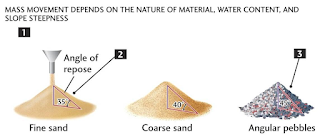Pegylation: Advantages and Challenges
Introduction:
Pegylation is a chemical modification process in which polyethylene glycol (PEG) is attached to a drug molecule or protein to improve its pharmacokinetic and pharmacodynamic properties. PEG is a biocompatible and water-soluble polymer that can improve the drug's stability, solubility, and circulation time in the body. Pegylation is widely used in the pharmaceutical industry to enhance the therapeutic efficacy of drugs and reduce their toxicity. In this article, we will discuss the advantages and challenges of pegylation.
Advantages of Pegylation:
Improved pharmacokinetics: Pegylation can improve the pharmacokinetics of a drug by increasing its circulation time in the body. PEG is not recognized by the immune system and can help to reduce the clearance rate of the drug. This leads to a longer half-life, improved bioavailability, and a reduction in the frequency of dosing.
Reduced toxicity: Pegylation can reduce the toxicity of a drug by reducing its immunogenicity and improving its solubility. PEG can also protect the drug from degradation and increase its stability. This can help to reduce the adverse effects of the drug on healthy cells and tissues.
Increased efficacy: Pegylation can increase the efficacy of a drug by improving its solubility and targeting specific tissues. PEG can be functionalized with targeting ligands that can help to deliver the drug to specific cells or tissues. This can improve the drug's therapeutic efficacy and reduce its side effects.
Improved patient compliance: Pegylation can improve patient compliance by reducing the frequency of dosing. A longer circulation time in the body can help to reduce the number of doses required, leading to improved patient compliance and better treatment outcomes.
Challenges of Pegylation:
Manufacturing complexity: Pegylation can be a complex process that requires specialized equipment and expertise. The reaction conditions need to be carefully controlled to ensure the correct degree of pegylation and avoid unwanted side reactions.
Regulatory challenges: Pegylation may lead to changes in the drug's pharmacokinetics, which can affect its safety and efficacy. Regulatory agencies require extensive preclinical and clinical studies to ensure the safety and efficacy of pegylated drugs.
Cost: Pegylation can be a costly process that requires specialized equipment and reagents. The cost of producing pegylated drugs can be higher than that of non-pegylated drugs.
Immunogenicity: Although PEG is generally considered to be biocompatible, some individuals may develop an immune response to PEGylated drugs. This can lead to allergic reactions and other adverse effects.
Conclusion:
Pegylation is a widely used technique in the pharmaceutical industry to improve the pharmacokinetic and pharmacodynamic properties of drugs. It offers several advantages, including improved pharmacokinetics, reduced toxicity, increased efficacy, and improved patient compliance. However, there are also several challenges associated with pegylation, including manufacturing complexity, regulatory challenges, cost, and immunogenicity. Despite these challenges, pegylation continues to be an important technique in the development of novel therapeutics for a wide range of diseases.




Comments
Post a Comment